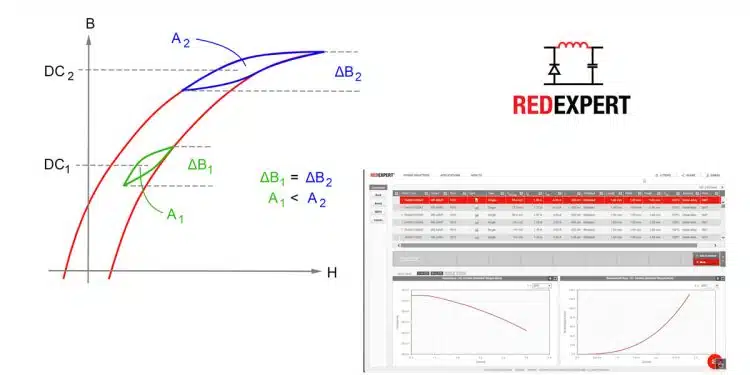Würth Elektronik’s online design platform, REDEXPERT, known as having the most accurate ac losses for power inductors under operating conditions, now includes the effects of dc bias on the ac losses.
It is a well-established but little understood fact that ac core losses increase when the ac ripple is dc biased. This is the normal operating condition for power converters like the buck regulator.
Normal intuition says that dc bias does not increase ac cores losses because it is a static shift. However, those who have experienced unexpected temperature rise and investigated, have found that the dc bias does in fact change the core’s ac losses. This can be understood by realizing the minor BH loop from the ac ripple follows along the general form of the major BH loop.
The permeability and hence inductance are proportional to the slope of the curves. As the minor loop move closer towards saturation, the minor loop’s slope decreases. This decreases inductance resulting in increased ripple current. With the decreased slope and the BH loop becomes elongated, meaning more losses.
Thus, as dc bias is increased, the inductance will eventually start to decrease as it moves towards saturation which will in turn increase the ripple and the ac losses. The minor BH loop representing the hysteresis losses increases.
REDEXPERT now includes this small but significant change for even more accurate ac losses.
































